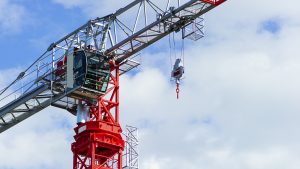British Columbia is poised to introduce a new licensing and certification regime for asbestos abatement work, a move WorkSafeBC calls an extremely important step forward.
“I think this is probably the single most significant change in this industry in years and the biggest step forward in ensuring safety for workers and for others at the worksite as well,” said WorkSafe’s director of prevention divisional services and credentialling Mary Lovelace in an interview with the Journal of Commerce.
“To us, this is it. This is when the sector substantially changes.”
Starting on Jan. 1, 2024, employers will be required to get licensed for asbestos abatement work and employees/contractors will be required to receive a certification to perform the work.
Asbestos exposure continues to be the leading cause of worker death in B.C. and a significant danger across the country.
B.C. will be the first province to introduce the new requirements.
The changes stem from a cross-ministerial working group that investigated the issues surrounding death from asbestos exposure, Lovelace said.
“They identified a number of key factors. One was a lack of available and effective training and lack of visibility into the work processes and who is doing it right,” she said.
Asbestos exposure primarily occurs in renovation and demolition work and often the greatest danger is a lack of understanding on how to handle or recognize the material, or how to recognize if the work has been done well, she said.
“There are a lot of workers that don’t know the risks they face in these workplaces and how to do the work safely. For those who are hiring contractors it’s really hard to know who is doing the work right.
“Abatement worksites are complex environments. A lot of the work is done inside a containment unit, so you can’t see it. You don’t know if the work is being done safely, unless you’re an asbestos expert.”
When disturbed, carcinogenic asbestos fibres can easily become airborne and stay airborne for hours or even days, so it’s not just the people directly involved in abatement work who are at risk, said Lovelace.
“It’s a risk to homeowners, contractors, other workers who come onto the worksite afterwards. So, licensing is going to do one of two things: it’s going to ensure that employers doing this work are held to standards aligned with the risks that their workers face; and it’s going to provide visibility and transparency to workers, homeowners, contractors and members of the public about who is doing this work right.”
The first designated providers were posted to worksafebc.com on Friday, June 23.
‚ÄúWe’ve been working with a number of providers to ensure provincial availability and accessibility for workers. They’ll have six months to get themselves certified in advance of that January 1 requirement date.‚Äù
Asbestos is particularly dangerous because the negative effects from exposure can take decades to materialize, most commonly in the form of the rare cancer mesothelioma.
“It’s the latency period. The fatalities that we see today are from exposures in the past, sometimes many years in the past. So, change will be slow, but we do anticipate that this will be a sea change for the industry.”
And the deadly material can be found all over the place.
“In a home it can be in acoustic tiles, roof shingles, light fixtures, piping outlets, stucco, drywall. There’s also asbestos in the spray coatings for structural steelwork, gasket materials, cement pipes underground and even in car brake systems,” Lovelace said.
Lovelace said anyone working in construction or renovation with older buildings of any age should be wary of asbestos exposure.
“They say pre-1990 construction is the real danger period. But, frankly speaking, even as these materials began to be phased out contractors may still have been using older inventory. You can’t always use the 1990 construction date as a hard and fast rule,” she said.
“The audit is going to be new and it’s going to go beyond what happens today. It’s going to look at all of the employer’s tools, machinery, equipment, policies, procedures and processes to make sure that everything they are doing is aligned with the risk of the work that they are undertaking.”
There are also four different levels of certification for workers, depending on the type of work they are performing.
Level 1: Foundational awareness is for anyone transporting or disposing of asbestos-containing waste.
Level 2: Asbestos safety is for anyone conducting asbestos abatement work.
Level 3: Asbestos safety leader is for supervisors and others responsible for the health and safety at abatement site; and Level S: Surveyor safety is for asbestos surveyors.
Lovelace said the increased requirements may drive some people out of the industry.
“But those that remain will be held to a higher standard and we really believe that this is going to be a major turning point.”











Recent Comments
comments for this post are closed